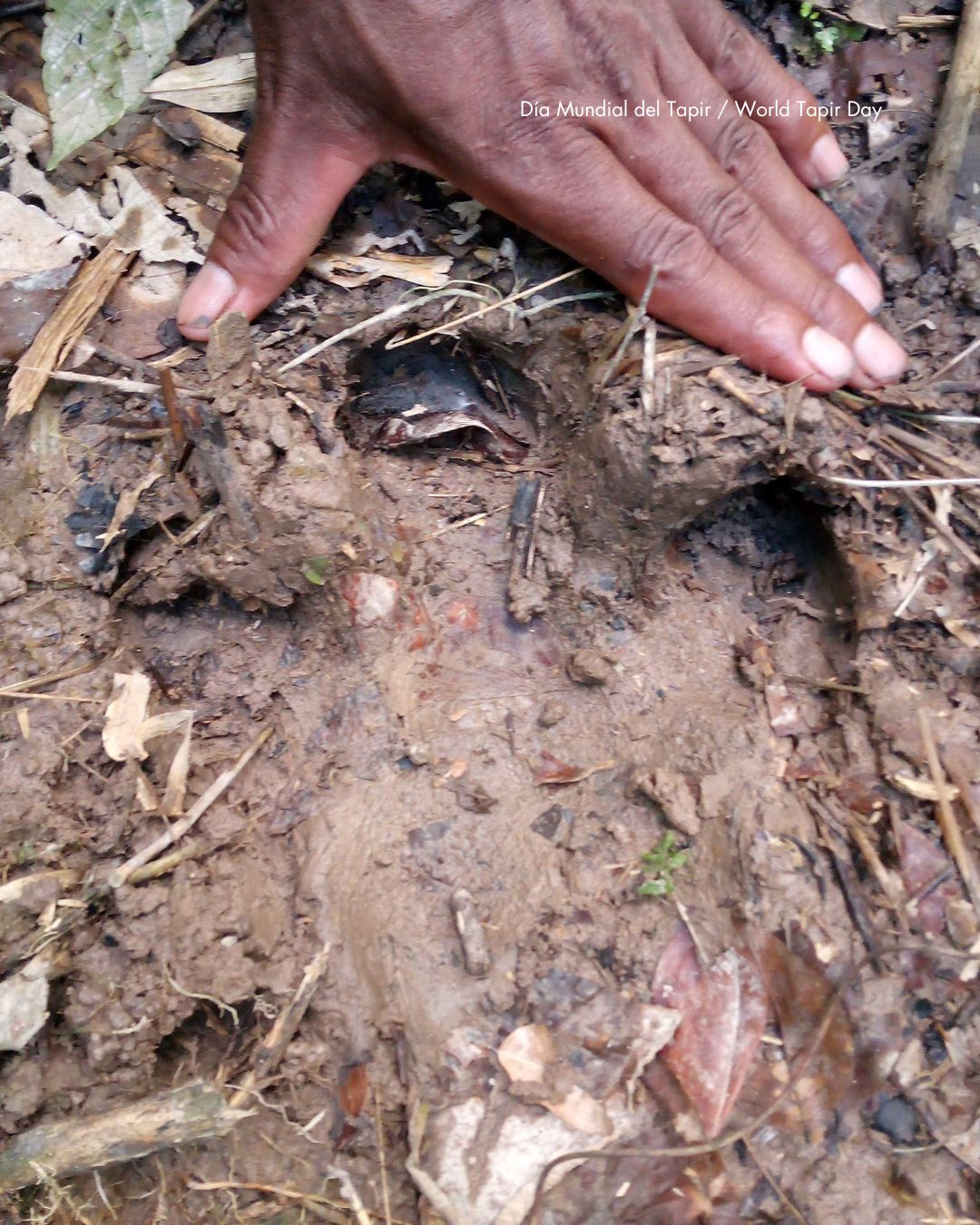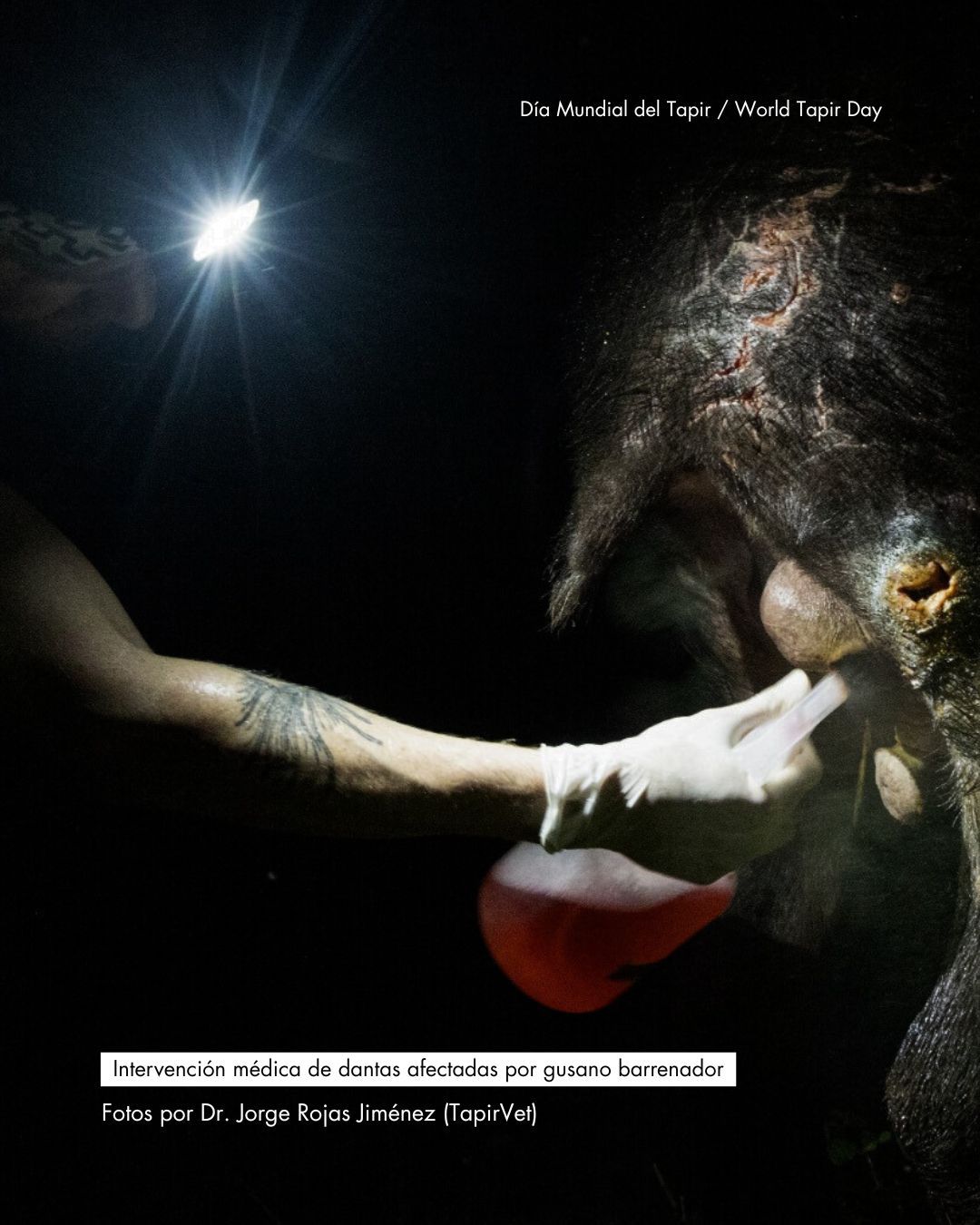In the most remote and untamed corners of the Mesoamerican forests, one of the oldest and most enigmatic mammals still walks the land: the Central American tapir (Tapirus bairdii), also known as “danta” or “danto” in Spanish.
This unique species is a true forest engineer. Its fruit-rich diet and ability to travel long distances make it a key seed disperser, playing a vital role in the regeneration of tropical ecosystems.
Tapirs can weigh up to 300 kilograms (660 pounds) and grow over two meters (6.5 feet) in length. Their gestation period is one of the longest among mammals—lasting over 13 months—and they give birth to a single calf. Their prehensile snout allows them to skillfully grasp leaves and fruits. Though terrestrial, they are excellent swimmers and often cool off in rivers, waterholes and lagoons. Their dark coat provides camouflage in the forest shadows, and their role as seed dispersers makes them true gardeners of tropical ecosystems.
Tracking tapirs: Signs of life in Mesoamerica
Thanks to community and technical patrols, we know tapirs still inhabit places like the Río Plátano Biosphere Reserve in Honduras, where over 200 direct signs—such as fresh tracks and dung—have been recorded since 2021.

 Tapir tracks and dung recorded in Río Plátano Reserve, Honduras. Photos by Bianca Padilla.
Tapir tracks and dung recorded in Río Plátano Reserve, Honduras. Photos by Bianca Padilla.
In Guatemala, measures have been implemented during the dry season to address water scarcity, including the installation of artificial water stations. One such example is the collaborative work of WCS, FUNDAECO, CONAP, and CECON at the Naachtun–Dos Lagunas Biotope. Additionally, WCS Guatemala, through its Department of Biological Research, is running a camera trap monitoring program to better understand the presence and behavior of tapirs and other wildlife.
Water stations installed at the Naachtun–Dos Lagunas Biotope. Video by WCS Guatemala, FUNDAECO, CONAP, and CECON, with support from the Biodiverse Landscapes Fund (BLF).
Tapir recorded by a ranger in the Maya Forest Corridor in Belize.
A look into tapir behavior through science
A recent study in Mexico’s Calakmul Biosphere Reserve, conducted by Rafael Reyna-Hurtado, Jonathan O. Huerta, and Edith Rojas, documented rare behaviors such as intense fights between males and vocalizations likely related to courtship. These interactions were observed at aguadas—key social watering sites for the species.
Video by Rafael Reyna-Hurtado, Jonathan O. Huerta, and Edith Rojas.
The article “Extreme fighting and vocalisations in Tapirus bairdii” offers new insights into the social dynamics of a species traditionally considered shy and solitary. These observed fights may explain the frequent wounds seen in adult tapirs and help us better understand their reproductive behavior.
🔗 Extreme fighting and vocalisations in Tapirus bairdii: observations from aguadas of Calakmul
Endangered, But Not Defeated
The Central American tapir is listed as Endangered by IUCN due to habitat loss, hunting, forest fragmentation, and more recently, threats like myiasis caused by the New World screwworm, which has already affected individuals in Costa Rica. Still, their resilience and adaptability allow them to find refuge in regions where active conservation—and the respect of local communities—prevail.

 Images of medical intervention on tapirs affected by screwworm, courtesy of Dr. Jorge Rojas Jiménez, director of the Tapir Vet Project.
Images of medical intervention on tapirs affected by screwworm, courtesy of Dr. Jorge Rojas Jiménez, director of the Tapir Vet Project.
From southern Mexico to northwestern Colombia—including Guatemala, Belize, Honduras, Nicaragua, Costa Rica, and Panama—the future of the tapir depends on our ability to protect the forests they still call home and to restore those they have lost.
 Map: Tapir range. Source: IUCN
Map: Tapir range. Source: IUCN
This April 27, let’s celebrate the tapir with action, commitment, and knowledge. Because protecting the tapir means protecting the forest—and protecting the forest means protecting us all.
Happy World Tapir Day!
Text by WCS Mesoamerica and the Caribbean in collaboration with: Bianca Padilla, Claudia Novelo Alpuche, Deseree Arzu, Gabriela Ponce, Rony García-Anleu, Sofía Baca, and Sofía Rosales. Special thanks to Dr. Jorge Rojas Jiménez (Costa Rica) and Dr. Rafael Reyna-Hurtado (Mexico).